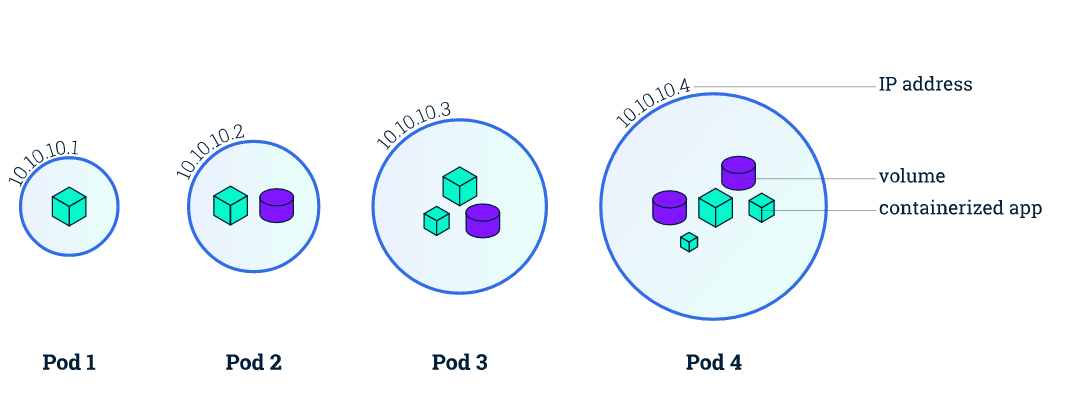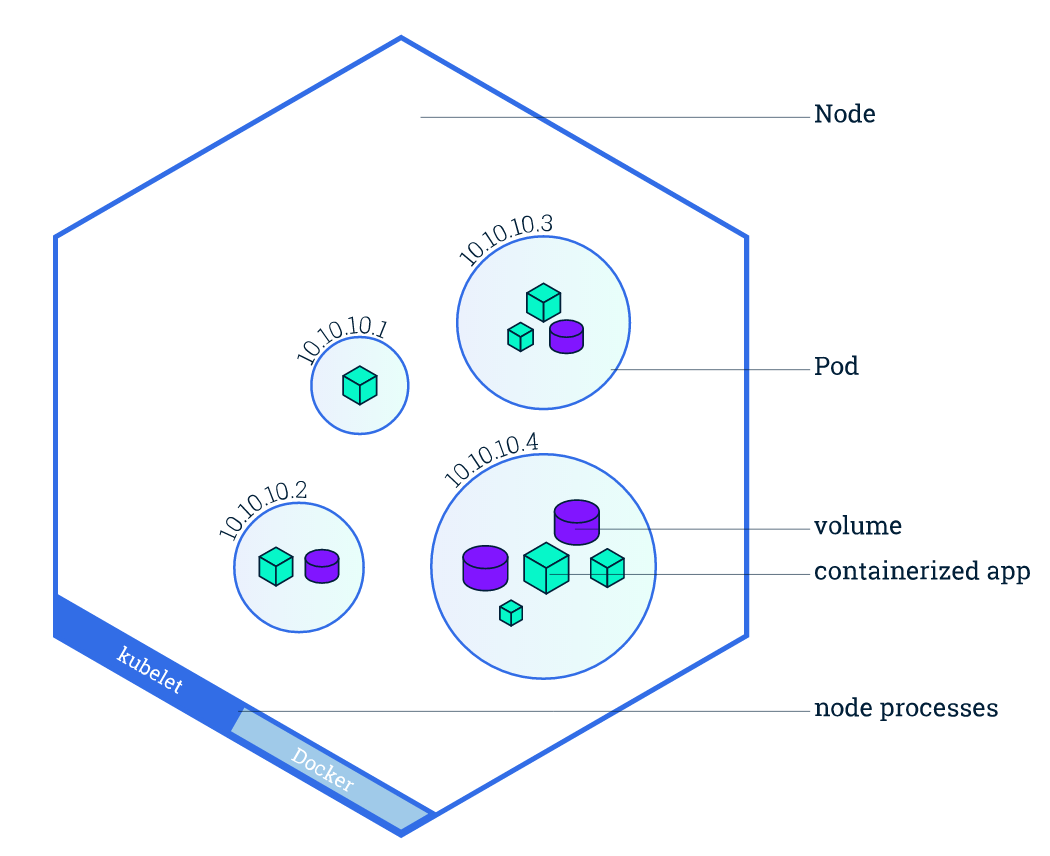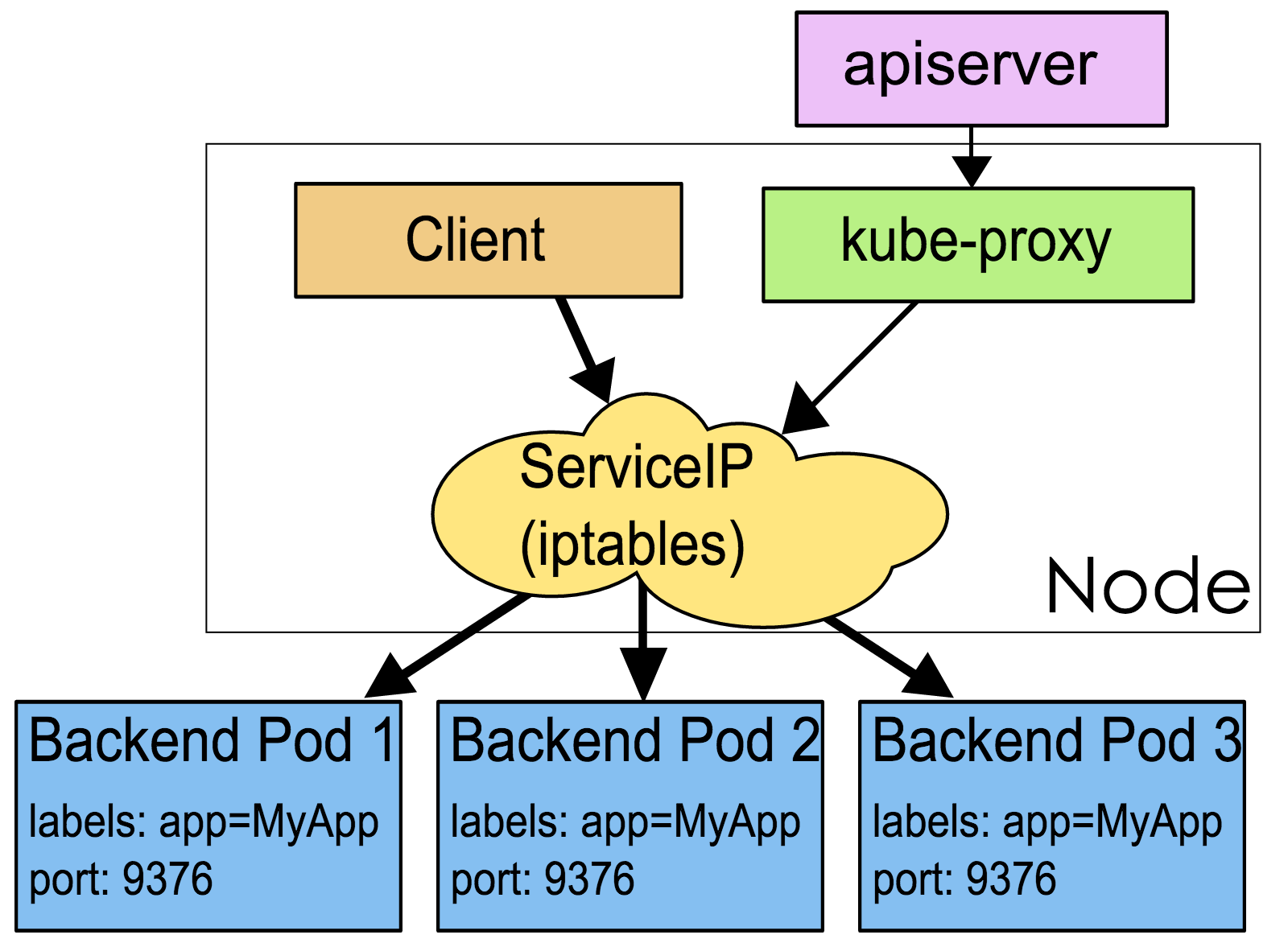1⃣️ Container
Container(容器)是一种便携式、轻量级的操作系统级虚拟化技术。它使用 namespace 隔离不同的软件运行环境,并通过镜像自包含软件的运行环境,从而使得容器可以很方便的在任何地方运行。
2⃣️2⃣️ Pod
Kubernetes 使用 Pod 来管理容器,每个 Pod 可以包含一个或多个紧密关联的容器。
Pod 是一组紧密关联的容器集合,它们共享 PID(同一个Pod中应用可以看到其它进程)、IPC(同一个Pod中的应用可以通过VPC或者POSIX进行通信)、Network (同一个Pod的中的应用对相同的IP地址和端口有权限)和 UTS namespace(同一个Pod中的应用共享一个主机名称),是 Kubernetes 调度的基本单位。Pod 内的多个容器共享网络和文件系统,可以通过进程间通信和文件共享这种简单高效的方式组合完成服务。

在 Kubernetes 中,所有对象都使用 manifest(yaml 或 json)来定义,比如一个简单的 nginx 服务可以定义为 nginx.yaml,它包含一个镜像为 nginx 的容器:
apiVersion: v1
kind: Pod
metadata:
name: nginx
labels:
app: nginx
spec:
containers:
- name: nginx
image: nginx
ports:
- containerPort: 80
3⃣️ Node
Node 是 Pod 真正运行的主机,可以是物理机,也可以是虚拟机。为了管理 Pod,每个 Node 节点上至少要运行 container runtime(比如 docker 或者 rkt)、kubelet 和 kube-proxy 服务。

4⃣️ Namespace
Namespace 是对一组资源和对象的抽象集合,比如可以用来将系统内部的对象划分为不同的项目组或用户组。常见的 pods, services, replication controllers 和 deployments 等都是属于某一个 namespace 的(默认是 default),而 node, persistentVolumes 等则不属于任何 namespace。
查看哪些 Kubernetes 资源在名字空间中,哪些不在名字空间中:
# 位于名字空间中的资源
kubectl api-resources --namespaced=true
# 不在名字空间中的资源
kubectl api-resources --namespaced=false
5⃣️ Service
Service 是应用服务的抽象,通过 labels 为应用提供负载均衡和服务发现。匹配 labels 的 Pod IP 和端口列表组成 endpoints,由 kube-proxy 负责将服务 IP 负载均衡到这些 endpoints 上。
每个 Service 都会自动分配一个 cluster IP(仅在集群内部可访问的虚拟地址)和 DNS 名,其他容器可以通过该地址或 DNS 来访问服务,而不需要了解后端容器的运行。

apiVersion: v1
kind: Service
metadata:
name: nginx
spec:
ports:
- port: 8078 # the port that this service should serve on
name: http
# the container on each pod to connect to, can be a name
# (e.g. 'www') or a number (e.g. 80)
targetPort: 80
protocol: TCP
selector:
app: nginx
6⃣️ Label
Label 是识别 Kubernetes 对象的标签,以 key/value 的方式附加到对象上(key 最长不能超过 63 字节,value 可以为空,也可以是不超过 253 字节的字符串)。
Label 不提供唯一性,并且实际上经常是很多对象(如 Pods)都使用相同的 label 来标志具体的应用。
Label 定义好后其他对象可以使用 Label Selector 来选择一组相同 label 的对象(比如 ReplicaSet 和 Service 用 label 来选择一组 Pod)。Label Selector 支持以下几种方式:
- 等式,如
app=nginx和env!=production - 集合,如
env in (production, qa) - 多个 label(它们之间是 AND 关系),如
app=nginx,env=test
7⃣️ Annotations
Annotations 是 key/value 形式附加于对象的注解。不同于 Labels 用于标志和选择对象,Annotations 则是用来记录一些附加信息,用来辅助应用部署、安全策略以及调度策略等。比如 deployment 使用 annotations 来记录 rolling update 的状态。
apiVersion: extensions/v1beta1
kind: Ingress
metadata:
name: gray-release
annotations:
# 请求头中满足正则匹配foo=bar的请求才会被路由到新版本服务new-nginx中
nginx.ingress.kubernetes.io/service-match: |
new-nginx: header("foo", /^bar$/)
# 在满足上述匹配规则的基础上仅允许50%的流量会被路由到新版本服务new-nginx中
nginx.ingress.kubernetes.io/service-weight: |
new-nginx: 50, old-nginx: 50
spec:
rules:
- host: www.example.com
http:
paths:
# 老版本服务
- path: /
backend:
serviceName: old-nginx
servicePort: 80
# 新版本服务
- path: /
backend:
serviceName: new-nginx
servicePort: 80
参考链接
https://feisky.gitbooks.io/kubernetes/content/introduction/concepts.html


评论